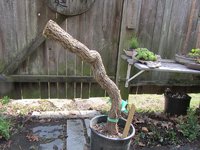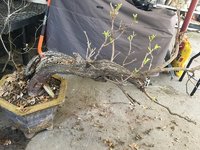Gaea's listener
Yamadori
Progress shots of this little bittersweet nightshade
From April 2021 till July 2021
I found it behind the vegetable garden and had no idea what it was but put it over a rock and waited for the leaves to show. It is fun watching it develop. It is very fast growing and easy to cultivate species. It responds very well to pruning with vigorous new growth. In a few months it developed an interesting shape and the flowers and berries on it are just adorable. I'd like to try a semi-cascade style for it eventually, for now it will just grow somewhat freely to thicken the trunk. I do cut the vertically growing branches eventually when they become too tall.
From April 2021 till July 2021
I found it behind the vegetable garden and had no idea what it was but put it over a rock and waited for the leaves to show. It is fun watching it develop. It is very fast growing and easy to cultivate species. It responds very well to pruning with vigorous new growth. In a few months it developed an interesting shape and the flowers and berries on it are just adorable. I'd like to try a semi-cascade style for it eventually, for now it will just grow somewhat freely to thicken the trunk. I do cut the vertically growing branches eventually when they become too tall.
Attachments
-
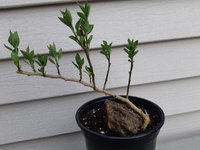 20210424_175533.jpg176.5 KB · Views: 34
20210424_175533.jpg176.5 KB · Views: 34 -
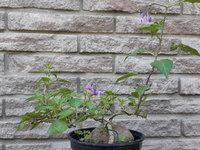 20210609_083442.jpg363.3 KB · Views: 29
20210609_083442.jpg363.3 KB · Views: 29 -
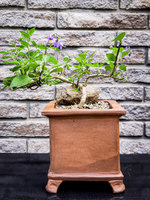 20210609_131550.jpg325.7 KB · Views: 26
20210609_131550.jpg325.7 KB · Views: 26 -
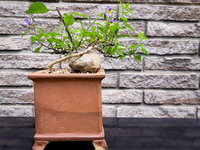 20210609_131558.jpg322.5 KB · Views: 26
20210609_131558.jpg322.5 KB · Views: 26 -
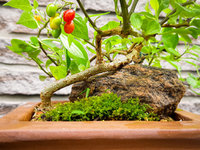 20210715_143927.jpg270.1 KB · Views: 19
20210715_143927.jpg270.1 KB · Views: 19 -
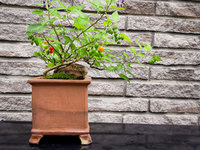 20210715_144050.jpg383.1 KB · Views: 17
20210715_144050.jpg383.1 KB · Views: 17 -
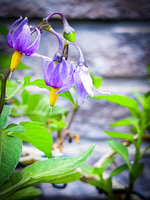 20210609_131134.jpg163.4 KB · Views: 18
20210609_131134.jpg163.4 KB · Views: 18 -
 20210715_143652.jpg181.6 KB · Views: 35
20210715_143652.jpg181.6 KB · Views: 35

